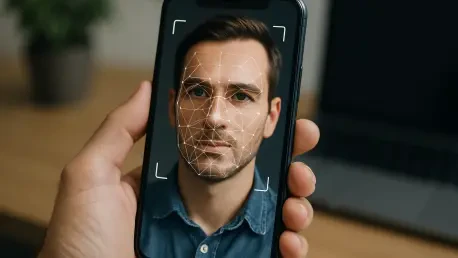In an era where digital interactions dominate daily life, the challenge of securely verifying identities online has become more pressing than ever, with billions of transactions and interactions hinging on trust in virtual spaces. The rise of sophisticated fraud and cyber threats has pushed governments and organizations to seek innovative solutions that balance security with user convenience. One such breakthrough is emerging through mobile biometrics, a technology that leverages the ubiquity of smartphones to revolutionize identity verification. A recent project in Estonia, spearheaded by a leading secure identity solutions provider, exemplifies this shift. By enabling users to submit facial and fingerprint data directly via a mobile app, this initiative is paving the way for a future where identity verification is seamless, accessible, and highly secure. This development not only addresses the growing demand for remote onboarding but also highlights the potential of mobile technology to redefine how trust is established in the digital realm.
Pioneering a Mobile-First Identity Future
The Estonian initiative stands as a landmark in the evolution of digital identity, showcasing how mobile biometrics can eliminate traditional barriers to verification. A key feature of this project is the ability to capture fingerprints using just a smartphone camera, removing the need for specialized hardware and making the process remarkably user-friendly. This contract, spanning 60 months from its inception, includes the design, development, and ongoing support of a cutting-edge mobile application tailored initially for eResidency applicants. Beyond its immediate scope, the project reflects a broader trend toward mobile-centric solutions that prioritize accessibility while maintaining robust security standards. Additionally, the adoption of a Software-as-a-Service (SaaS) model marks a strategic pivot for the provider, aligning with modern delivery trends by offering scalable, cloud-based services with continuous updates. This approach not only enhances flexibility for users but also positions mobile biometrics as a cornerstone of digital transformation, setting a precedent for how nations and organizations can strengthen their identity ecosystems in an increasingly connected world.
Shaping the Next Steps in Digital Trust
Looking back, the strides made through projects like the one in Estonia demonstrate a pivotal moment when mobile biometrics began to reshape the landscape of identity verification. The success of such initiatives underscores the power of integrating advanced algorithms with everyday technology to create secure, user-friendly solutions. As this technology gains traction, it becomes clear that the fusion of mobile accessibility and biometric precision offers a scalable answer to global security challenges. Moving forward, the focus should shift toward expanding these innovations to broader populations, ensuring inclusivity across diverse demographics and technological environments. Governments and private entities alike must prioritize investments in interoperable systems that can adapt to evolving threats. Collaboration between tech providers and policymakers will be essential to establish standardized frameworks that protect user privacy while maximizing the benefits of mobile biometrics. These actionable steps can solidify the foundation for a future where digital trust is both ubiquitous and unbreakable.









